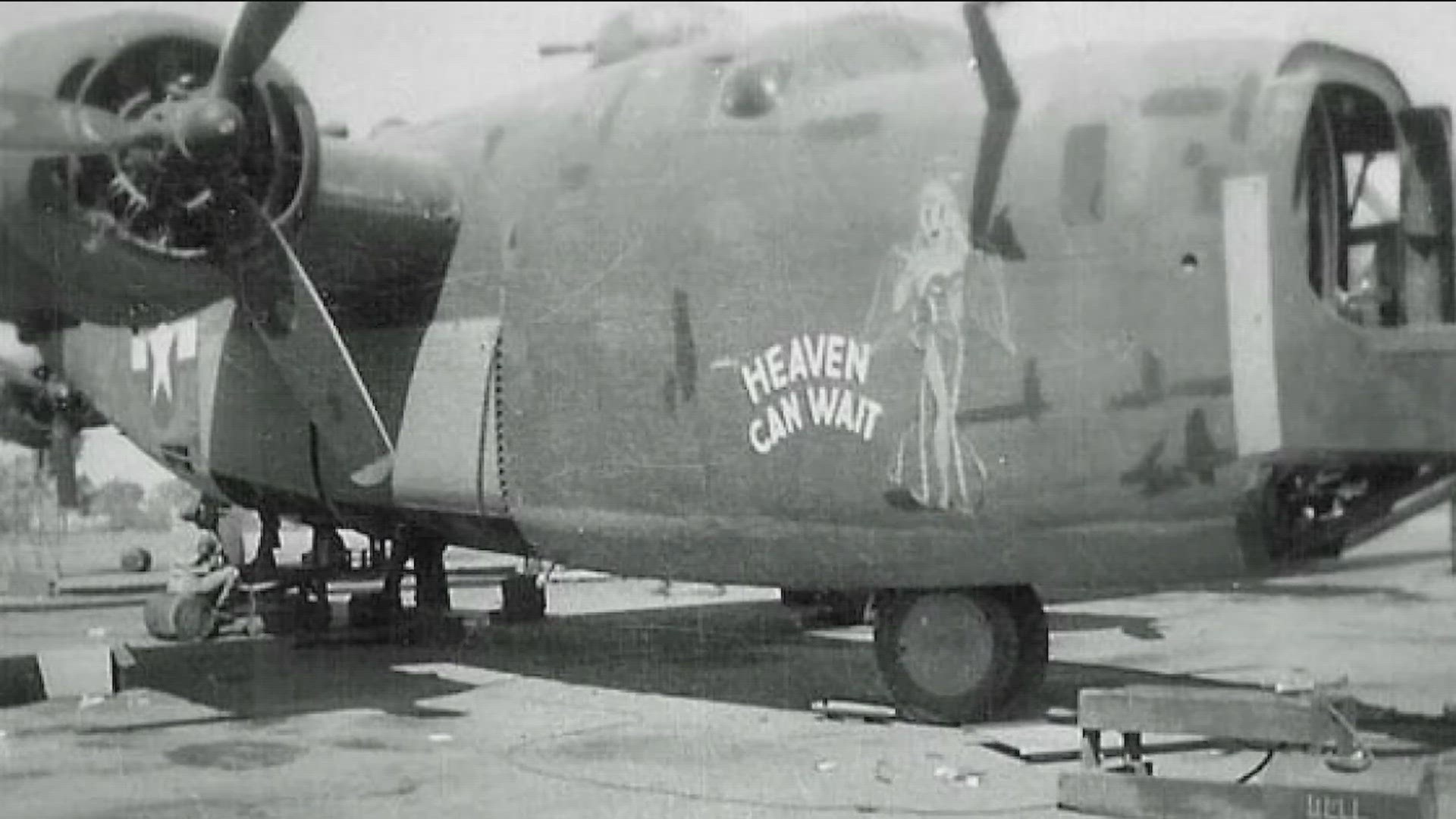GEORGETOWN, Texas — The American B-24 bomber named "Heaven Can Wait" was shot down off the coast of New Guinea in March of 1944. All 11 servicemen aboard were killed.
Those 11 men have been counted among the more than 72,000 service members and civilians considered missing in action or unaccounted for from World War II.
Lt. Thomas V. Kelly Jr., from California, was one of the men aboard the plane when it fell to the water in Hansa Bay.
Sandy Althaus, who lives in Georgetown now, was a young child that spring. She was Kelly's cousin.
"I remember the phone call that my mother had that he had been killed," she told KVUE. "From that point on, there was very little conversation about it. It was so painful that that generation could not handle a discussion."
On Memorial Day 2013, Sandy Althaus' son, Scott Althaus, began the difficult task of finding the location of the plane. Scott Althaus, who is an academic researcher for the University of Illinois, spent hours researching whatever information he could find about "Heaven Can Wait."
"We ended up learning a lot that the family had not known, and enough that we could we could be fairly confident we knew where that plane was likely to be in the water, in a specific bay in Papua New Guinea," he said.
Scott Althaus made contact with a group now known as Project Recover, who had the ability to travel to the crash site and search for the wreckage. In 2017, group members found it.
Daniel O'Brien is with Project Recover.
"We had two missions going to Papua New Guinea. With the second mission, we were targeting that area where the B-24 'Heaven Can Wait' had gone down, and in fact, found it pretty darn close to where Scott Althaus and the other family members had proposed that it might be," O'Brien said.
The wreckage was more than 230 feet deep – too deep for a traditional dive team to conduct a mission to recover any remains of the plane or its crew members.
A government agency named the Defense POW/MIA Accounting Agency, or DPAA, along with the Navy Experimental Diving Unit, got involved. Earlier this year, a team made the trip to Hansa Bay to recover what they could from the bomber.
Greg Stratton is with the DPAA and was a leader on the mission.
"We recovered a tremendous amount of biological and non-biological evidence to bring home to analyze," he said.
Lt. Commander Daniel Kinney was the leader for the dive unit.
"When we actually got to the bottom and were able to see the aircraft wreckage and to kind of understand the story behind everything, it was a humbling experience and one that my team is forever going to be grateful that we were a part of," Kinney said.
It will take months to analyze the material that was found, but the mission was a huge success. A repatriation ceremony was held for the service members earlier this month and the remains were flown back to the U.S.

